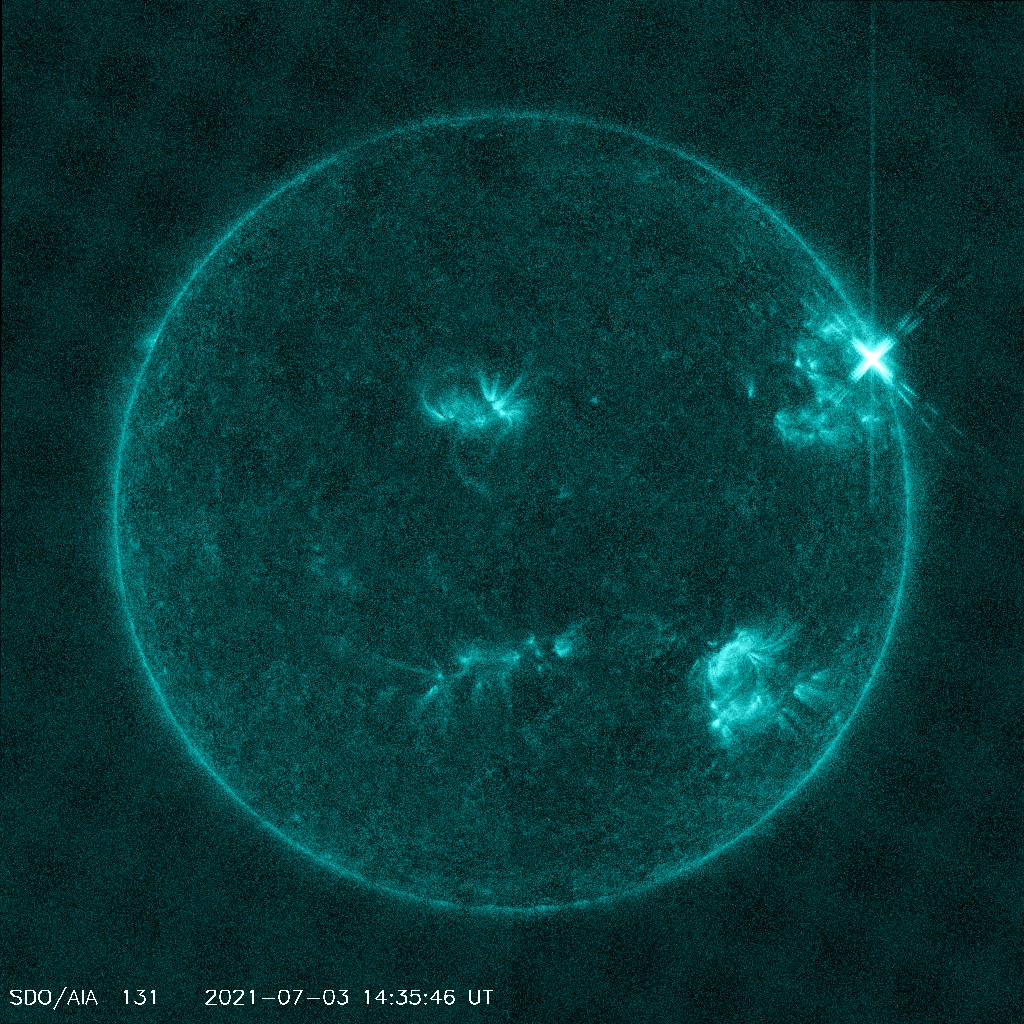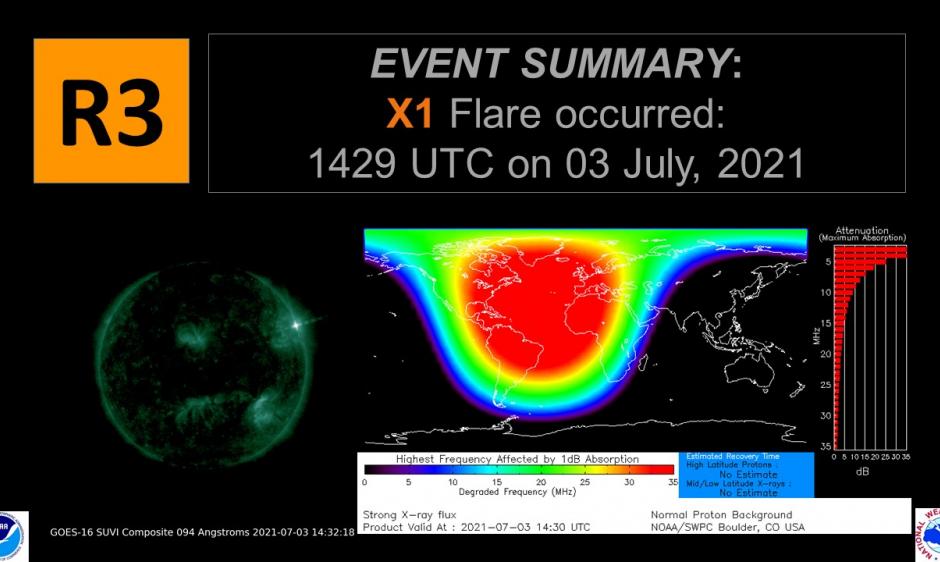Sun erupts with biggest solar flare in 4 years in early Fourth of July fireworks (video)
The sun erupted with a surprise solar flare on Saturday (July 3), the largest since 2017, in an early explosion of cosmic fireworks ahead of the Fourth of July.
The solar flare occurred from a sunspot called AR2838 at 10:29 a.m. EDT (1429 GMT) on Saturday and registered as a powerful X1-class sun event, according to the U.S. Space Weather Prediction Center (SWPC) tracking the sun's weather. It caused a brief radio blackout on Earth, center officials said in an update.
A video of the solar flare from NASA's Solar Dynamics Observatory shows the flare erupting from the upper right limb of the star as seen by the spacecraft, one of many used to monitor the sun's weather.
In Photos: The Sun's Wrath: Worst Solar Storms in History

X-class solar flares are the strongest kind of eruptions on the sun. When aimed directly at Earth, the most powerful ones can endanger astronauts and satellites in space, as well as interfere with power grids on Earth. More moderate M-class solar flares can also supercharge Earth's auroras with dazzling displays.
The sunspot AR2838 that shot off Saturday's flare is new active region on the sun.
"This sunspot region developed overnight and was also responsible for an M2 flare (R1 - Minor Radio Blackout) at 07:17 UTC on 03 July," SWPC officials wrote in the update.
Get the Space.com Newsletter
Breaking space news, the latest updates on rocket launches, skywatching events and more!
In photos: The Sun's Monster X9.3 Solar Flare of Sept. 6, 2017

Spaceweather.com, a website that tracks space weather events, reported that the sunspot's big flare registered as a class X1.5 on the scale used to track sun events and has now rotated around to the far side of the sun.
"As quickly as it appeared, the sunspot is already gone," Spaceweather.com reported today. "On July 4th it rotated over the sun's northwestern limb, and will spend the next two weeks transiting the far side of the sun."
The sun's weather follows an 11-year cycle with active phases and years of relative solar quiescence. The current cycle, called solar cycle 25, began in 2020.
Email Tariq Malik at tmalik@space.com or follow him @tariqjmalik. Follow us @Spacedotcom, Facebook and Instagram.
Join our Space Forums to keep talking space on the latest missions, night sky and more! And if you have a news tip, correction or comment, let us know at: community@space.com.

Tariq is the Editor-in-Chief of Space.com and joined the team in 2001, first as an intern and staff writer, and later as an editor. He covers human spaceflight, exploration and space science, as well as skywatching and entertainment. He became Space.com's Managing Editor in 2009 and Editor-in-Chief in 2019. Before joining Space.com, Tariq was a staff reporter for The Los Angeles Times covering education and city beats in La Habra, Fullerton and Huntington Beach. In October 2022, Tariq received the Harry Kolcum Award for excellence in space reporting from the National Space Club Florida Committee. He is also an Eagle Scout (yes, he has the Space Exploration merit badge) and went to Space Camp four times as a kid and a fifth time as an adult. He has journalism degrees from the University of Southern California and New York University. You can find Tariq at Space.com and as the co-host to the This Week In Space podcast with space historian Rod Pyle on the TWiT network. To see his latest project, you can follow Tariq on Twitter @tariqjmalik.









